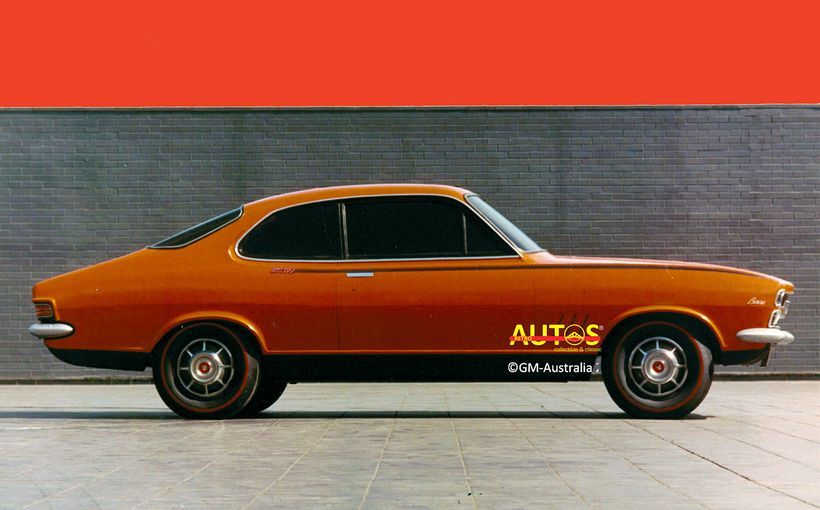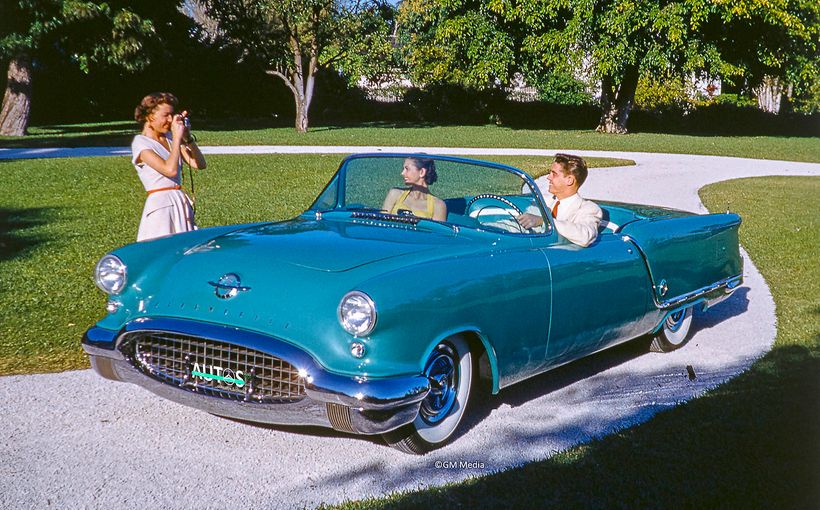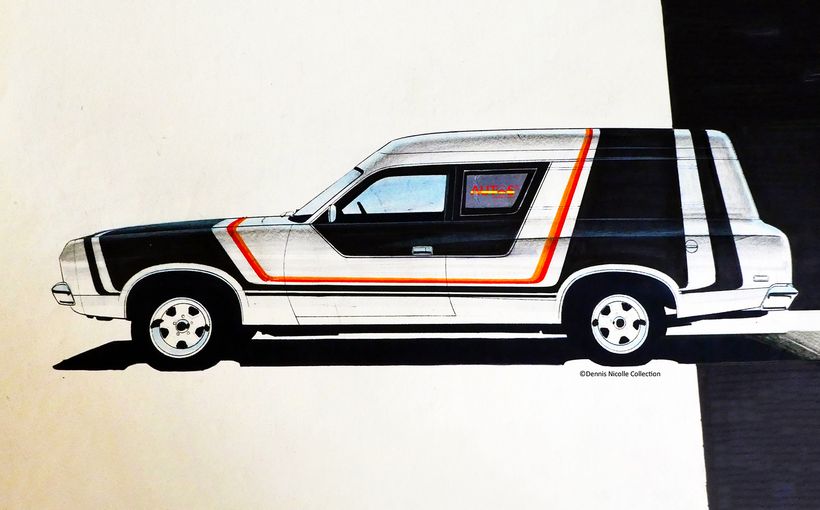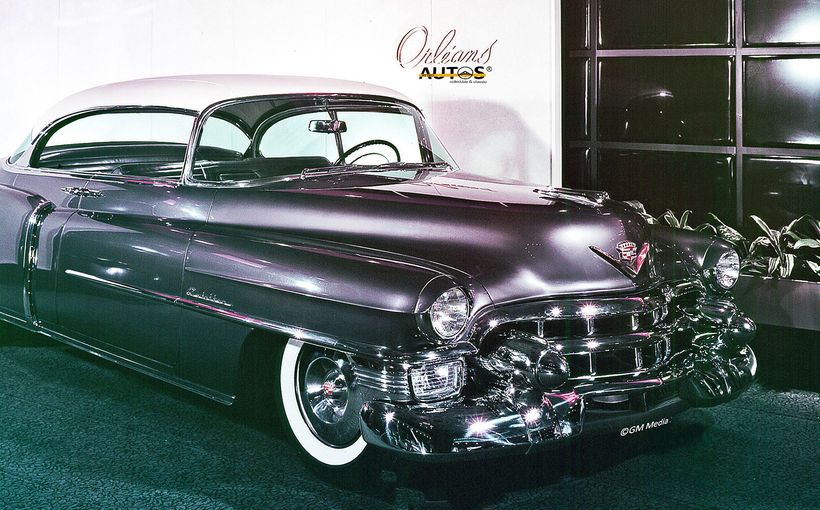
I was not in Venice, Italy, on Thursday 12th September, 1963. If I had been there, I would have seen a motor car being floated through the city’s canals on a gondola. The 2+2 sports saloon was being taken to the famed Piazza San Marco via the Grand Canal and Rialto Bridge.
It was the first time a car had entered the Square, or so the PR flacks from the car’s maker would have you believe. There to celebrate its arrival was a gaggle of glitterati and dignitaries, including the Mayor of Venice, Giovanni Fisca, and the British Ambassador.
Eh? The British Ambassador? What was His Excellency Sir John Guthrie Ward doing there? Well, he was there to “show the flag” because the car in question was British by way of Italy. It was the Sunbeam Venezia Superleggera, and its two makers, the Rootes company, headquartered in Mayfair, London, and Carrozzeria Touring, located in Milan, had high hopes for the car’s success in the Italian market.
Here’s what the media release boasted. “The Sunbeam Venezia Superleggera—an entirely new and luxuriously equipped sports saloon designed for the Italian market. True to its name, this glamorous new model blends Italian styling with British engineering.”


You have to wonder at the wisdom of competing against Fiat, Alfa Romeo and Lancia in their home market, but Rootes and Touring believed they had many reasons to be optimistic about their future and the Venezia’s potential.
Back in early the 1950s the Rootes Group was doing well. They were renowned for offering pleasantly styled and solidly engineered automobiles and commercial vehicles—Humber, Hillman, Singer, Sunbeam, Commer, Tilling Stevens and Karrier— which sold at a premium price to their competition because of those very qualities.
“Badge engineering” was a particular skill of Rootes, and it served them well. The Raymond Lowey styled “Audax” range of family cars—Hillman Minx, Singer Gazelle and Sunbeam Rapier—was a good example. Raymond shaped them to resemble a smaller version of the 1953 Studebaker. The range was progressively released during 1955 and 1956 and comprised sedan, wagon, convertible and two door pillarless coupe models. No other UK manufacturer offered such a comprehensive selection of factory approved body styles within one range at such “low” price points.




Over in the USA, Rootes was enjoying a surge in sales, especially with the Minx. Almost 10% of Hillman’s 1957 production went to America.
In 1959 the Sunbeam Alpine was launched. It gave Rootes a direct competitor for the MGA and Triumph TR2, but with higher level of comfort. American sales were very strong, supported by racing success in Sports Car Club of America events. At the upper end of the market Rootes offered the Humber Hawk and Super Snipe, for those who valued understated style and an interior that featured acres of inlaid wood.
In short, from a late 1950s perspective, the Rootes Group, led by brothers Billy and Reg Rootes, was confident of its future.


The idea for the Venezia came from Rootes’ Italian subsidiary, located in Milan. It was managed by the ironically named George Carless. In early 1960 he had the idea of developing a sporty sedan specifically aimed at the Italian market. The idea, which was not the subject of in-depth market research nor product planning, gained the support of Billy Rootes.
With Billy’s “ok”, Carless arranged with Carrozzeria Touring to style and develop the car. Touring already had a contract to modify the Alpines for Italy, so they welcomed the Venezia deal.
Touring was then a renowned builder of specialist cars for the likes of Maserati, Alfa Romeo and Aston Martin. They used their patented Superleggera method, which involved a tubular metal framework grafted onto a manufacturer's chassis. Sheet metal panels, usually aluminium, were fixed to the framework. Touring was also responsible for 1954-55 Hudson Italia, 25 of which were built on the Hudson Jet chassis.


The design work on the Venezia began in late 1961. The idea of a sedan was replaced by a two door 2+2 saloon. The overall styling theme was similar to other current Touring efforts, with a slightly wrapped windscreen and a rear end reminiscent of a Maserati 3500 GT. Another Touring styling motif incorporated into the Venezia were the apertures above the headlights.
In October 1961 Rootes did a deal with Touring for them to assemble the new Super Minx. Combined with the existing Alpine assembly, the contract gave Touring a steady 3,000 cars a year, to be produced in a new factory it was building.


In 1962, with the styling approved, Touring was tasked with building 300 Venezias a year. Rootes would provide the chassis, engine, gearbox, and running gear. Touring would build the Superleggera frame onto which hand made panels would be attached. Interior parts were shared. The car would wear the prestigious Touring Superleggera badge. So far, all good.
Then the troubles started and by the time the car was launched in September 1963, it was already a problematic proposition for both companies.
Let’s start with Rootes’ tale of woe. Beginning in 1961, the company endured a succession of crippling strikes. Production schedules were severely disrupted and finances impacted.
The next financial blow came via Rootes’ foray into the small car segment with the rear engine Imp. There was actually nothing wrong with the concept, but it was all new territory for the company. Engineering development delays added to the mounting financial stress. In a push to make up for lost time the car was released in May 1963 before it was fully sorted. And we all know the story after that.
Meanwhile, in 1962, Ford unveiled their keenly priced Cortina and BMC debuted the 1100, both of which took sales from the Minx and Super Minx, creating more financial pressure.


Across the Continent, Touring was having trouble on three fronts. In early 1963 their staff engaged in a number of strikes, only a few months after they’d moved to their new factory. The ill-timed stop-work actions weakened the company financially.
Touring’s order book had also started to dwindle. As car makers transitioned to unitary construction rather than body-on-frame, the Superleggera method became increasingly difficult to achieve.
Changes to the Italian automobile taxation regime were another blow to Touring. The government imposed higher taxes on large engine cars causing Lancia, Maserati and Lamborghini to quickly reduce their production requirements, leaving the new Touring factory very underutilised.
The combined impact of these events meant that Touring slid into “hibernation” in 1966.
And then there was the car itself. The Venezia was a hand built, high cost, low volume project for Rootes. It was just the sort project which was easy to curtail when money was tight. In August 1963, just ahead of the launch and with financial issues all too obvious, Rootes cut the car’s production to 250 per year. In 1964, Billy Rootes died, and the company’s priorities shifted quickly into survival mode.
If the financial and production problems were not enough, the Venezia itself did not live up to its PR promise of “fast trans-continental travel”, “swift acceleration” and the “effortless way it maintains high speed cruising speeds”.

The media release boasted the car was powered by a special version of the Rootes 1.6-litre four cylinder engine and delivered 94bhp/70Kw. A top speed of 100mph/160kph was claimed. Later road tests suggest the horsepower figure was somewhat overstated. The transmission was a four speed unit with overdrive. Gears were selected via what the PR blurb proudly highlighted was a “short stick”.
Despite the weight saved through the use of aluminium body panels, the engine did not have enough power to allow spirited driving on Italy’s twisting mountain roads and high speed autostradas. And, it was priced higher than comparable automobiles offered by Fiat and Alfa Romeo. What was the attraction in that?
But there is more! The media release actually admitted that the car was too expensive to be sold in the UK. The Venezia’s price would have been almost double that of the Super Minx in Great Britain. When sales tax and import duties were added, it started to reach into Jaguar territory.
Not surprisingly, the Venezia sold in small numbers. Records are sketchy. Most sources agree that around 200 were built in total. Production ceased when Touring closed in 1966.

From a 21st century perspective you have to wonder why the folks at Rootes thought they could make inroads into the homeland market share of Alfa Romeo, Lancia and Fiat. Indeed, why did Rootes develop the Venezia at all?
It was high cost niche car with a minuscule volume and zero profit potential. It was a drain on financial, people and engineering resources at a time when Rootes required laser-like focus on cars that had the potential to deliver profits. If they’d desired a sporty luxury car with export potential, then they had more viable options available.
For a start why not leverage the sales, film and racing success of the Alpine? It sold well. Twenty thousand, in fact. Most went to the USA. It was the star car of the first James Bond film, Dr No. It used the Hillman Husky platform and with a cut and shut to add width and four extra inches/100mm inserted into the wheelbase plus a fixed roof, which Rootes had developed, it would have been an ideal alternative. Rootes also commissioned a V8 version, the Tiger, which had great potential. The prototype was converted in Carroll Shelby’s workshop in the Los Angeles suburb of….wait for it….. Venice.


The next option could have been the Humber Sceptre, which was originally planned to be a four door “coupe” replacement for the Rapier. With its lowered roof line, bigger engine and luxury appointments it would have been no problem for the masters of brand engineering to affix the Sunbeam Venezia name to the fenders and aim it directly at the UK, European and North America markets.


A third option was a two door hardtop version of the Sceptre, based on the Super Minx convertible. Rootes had an exclusive arrangement with coachbuilders Thrupp and Maberly to construct the Rapier hardtop and Minx/Rapier convertibles, along with bespoke Humbers. Why not use their in-house expertise to develop and build the car?


Let’s face it, the Venezia was a misguided vanity project which ought never to have gone beyond a five minute discussion in the boardroom and a short entry in the meeting minutes which read “Presentation made and discussed. No profit potential. No action.”
The obvious opportunities, which were in plain sight, were passed over. Looking back, the 1967 Rapier fastback was as close as Rootes ever got to what the Venezia ought to have been.


Beginning in 1964 the financially embarrassed Rootes was progressively absorbed by Chrysler and its brands are now just memories, though with active and strong followings among motoring enthusiast across the world.
And as for Touring? Although its operations ceased in 1966 the trademark was retained. In 2006 the rights for the Touring Superleggera brand were acquired by the Zeta Europe BV group, who set up Carrozzeria Touring Superleggera in Milan to provide automotive design, engineering, coachbuilding and restoration of historic vehicles. In 2014, BMW revealed its MINI Superleggera, a concept car created in collaboration with Touring.
Retroautos is written and published by David Burrell with passion and pride.










